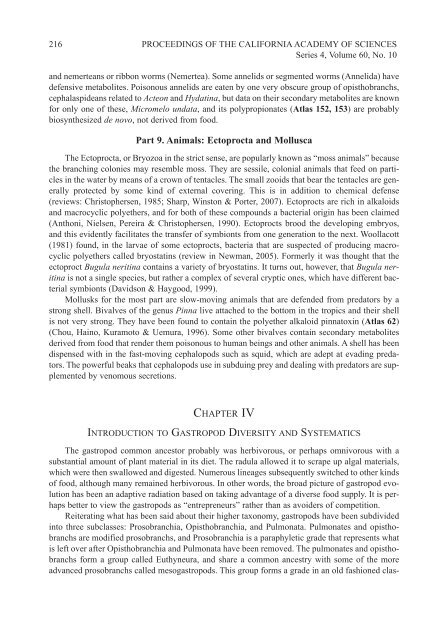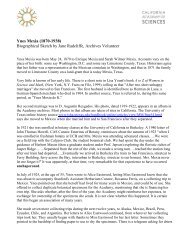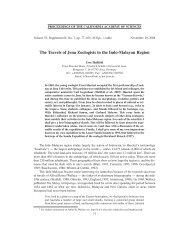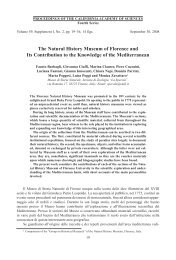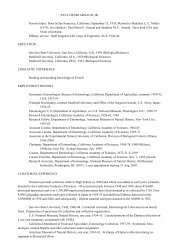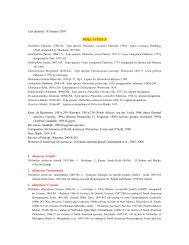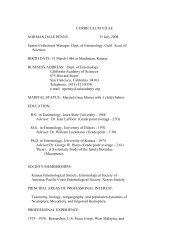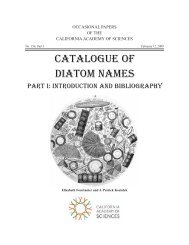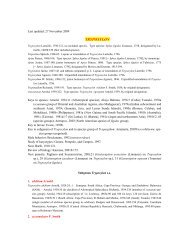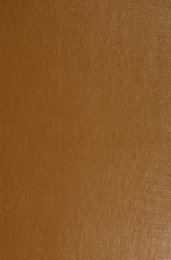Cimino&Ghiselin-tmpZXYZ:Template Proceedings_1.qxd.qxd
Cimino&Ghiselin-tmpZXYZ:Template Proceedings_1.qxd.qxd
Cimino&Ghiselin-tmpZXYZ:Template Proceedings_1.qxd.qxd
You also want an ePaper? Increase the reach of your titles
YUMPU automatically turns print PDFs into web optimized ePapers that Google loves.
216 PROCEEDINGS OF THE CALIFORNIA ACADEMY OF SCIENCES<br />
Series 4, Volume 60, No. 10<br />
and nemerteans or ribbon worms (Nemertea). Some annelids or segmented worms (Annelida) have<br />
defensive metabolites. Poisonous annelids are eaten by one very obscure group of opisthobranchs,<br />
cephalaspideans related to Acteon and Hydatina, but data on their secondary metabolites are known<br />
for only one of these, Micromelo undata, and its polypropionates (Atlas 152, 153) are probably<br />
biosynthesized de novo, not derived from food.<br />
Part 9. Animals: Ectoprocta and Mollusca<br />
The Ectoprocta, or Bryozoa in the strict sense, are popularly known as “moss animals” because<br />
the branching colonies may resemble moss. They are sessile, colonial animals that feed on particles<br />
in the water by means of a crown of tentacles. The small zooids that bear the tentacles are generally<br />
protected by some kind of external covering. This is in addition to chemical defense<br />
(reviews: Christophersen, 1985; Sharp, Winston & Porter, 2007). Ectoprocts are rich in alkaloids<br />
and macrocyclic polyethers, and for both of these compounds a bacterial origin has been claimed<br />
(Anthoni, Nielsen, Pereira & Christophersen, 1990). Ectoprocts brood the developing embryos,<br />
and this evidently facilitates the transfer of symbionts from one generation to the next. Woollacott<br />
(1981) found, in the larvae of some ectoprocts, bacteria that are suspected of producing macrocyclic<br />
polyethers called bryostatins (review in Newman, 2005). Formerly it was thought that the<br />
ectoproct Bugula neritina contains a variety of bryostatins. It turns out, however, that Bugula neritina<br />
is not a single species, but rather a complex of several cryptic ones, which have different bacterial<br />
symbionts (Davidson & Haygood, 1999).<br />
Mollusks for the most part are slow-moving animals that are defended from predators by a<br />
strong shell. Bivalves of the genus Pinna live attached to the bottom in the tropics and their shell<br />
is not very strong. They have been found to contain the polyether alkaloid pinnatoxin (Atlas 62)<br />
(Chou, Haino, Kuramoto & Uemura, 1996). Some other bivalves contain secondary metabolites<br />
derived from food that render them poisonous to human beings and other animals. A shell has been<br />
dispensed with in the fast-moving cephalopods such as squid, which are adept at evading predators.<br />
The powerful beaks that cephalopods use in subduing prey and dealing with predators are supplemented<br />
by venomous secretions.<br />
CHAPTER IV<br />
INTRODUCTION TO GASTROPOD DIVERSITY AND SYSTEMATICS<br />
The gastropod common ancestor probably was herbivorous, or perhaps omnivorous with a<br />
substantial amount of plant material in its diet. The radula allowed it to scrape up algal materials,<br />
which were then swallowed and digested. Numerous lineages subsequently switched to other kinds<br />
of food, although many remained herbivorous. In other words, the broad picture of gastropod evolution<br />
has been an adaptive radiation based on taking advantage of a diverse food supply. It is perhaps<br />
better to view the gastropods as “entrepreneurs” rather than as avoiders of competition.<br />
Reiterating what has been said about their higher taxonomy, gastropods have been subdivided<br />
into three subclasses: Prosobranchia, Opisthobranchia, and Pulmonata. Pulmonates and opisthobranchs<br />
are modified prosobranchs, and Prosobranchia is a paraphyletic grade that represents what<br />
is left over after Opisthobranchia and Pulmonata have been removed. The pulmonates and opisthobranchs<br />
form a group called Euthyneura, and share a common ancestry with some of the more<br />
advanced prosobranchs called mesogastropods. This group forms a grade in an old fashioned clas-


